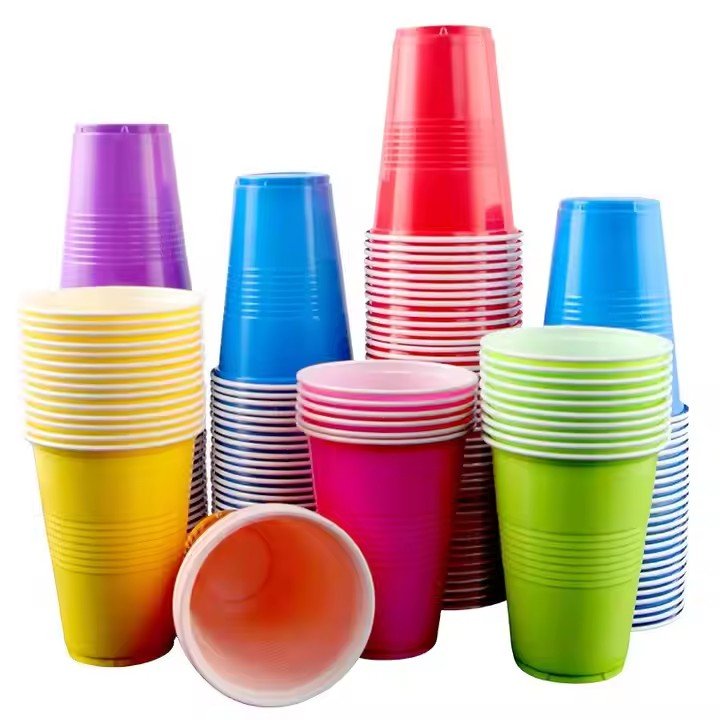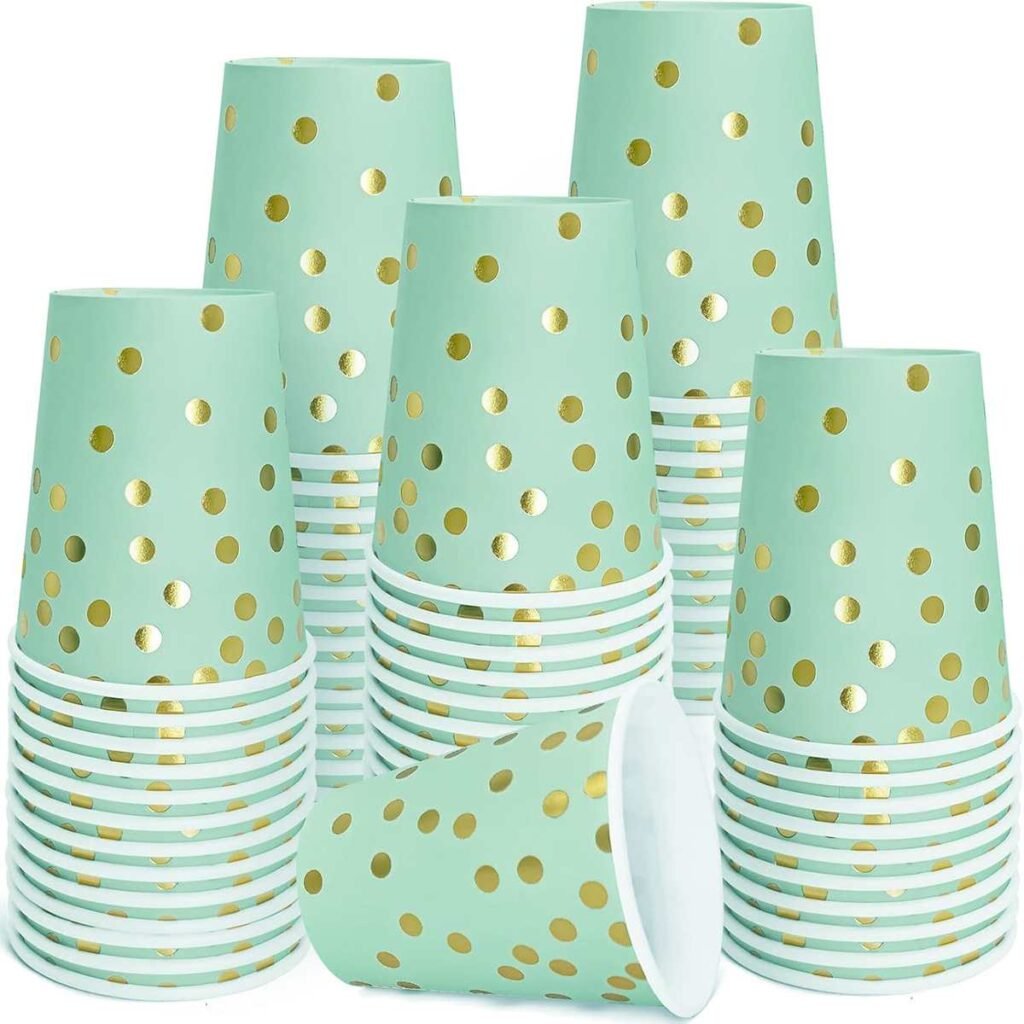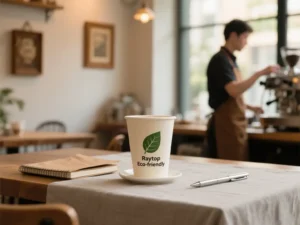
1. Production Process of Paper Cups
a. Raw Material Preparation
- Base Paper Roll: Made from food-grade virgin wood pulp, usually coated with PE (polyethylene) or PLA (polylactic acid).
- Printing Ink: Eco-friendly, food-grade ink suitable for direct food contact.
b. Printing
- Flexographic or offset printing is used to apply customized branding or artwork.
- Ink is dried immediately to prevent smudging or contamination.
c. Die-Cutting
- Printed paper rolls are cut into fan-shaped pieces (cup blanks) for cup body forming.
d. Cup Forming
- Cup Body Shaping: Cup blanks are wrapped into a cylindrical shape and sealed by ultrasonic or heat sealing.
- Bottom Sealing: Paper discs are inserted and sealed to form the cup bottom.
- Rim Rolling: The top rim is curled for added strength and comfortable drinking.
e. Inspection & Packaging
- Automated inspection for leakage, deformities, or contamination.
- Approved cups are stacked, counted, and packed into cartons.
2. Common Materials Used in Paper Cups
| Material | Description | Eco-Friendly |
|---|---|---|
| Virgin Wood Pulp Paper | Food-safe, unbleached and non-recycled | ✅ Yes |
| PE Coating (Polyethylene) | Waterproof but not biodegradable | ❌ No |
| PLA Coating (Polylactic Acid) | Plant-based, compostable under industrial conditions | ✅ Yes |
| Water-Based Ink | Non-toxic, low VOC, suitable for food packaging | ✅ Yes |
Note: Double PE-coated paper is commonly used for hot & cold dual-use cups, while PLA-coated paper is ideal for compostable cups.
3. Environmental Standards & Sustainability
a. Material Safety Compliance
- Complies with FDA, LFGB, or equivalent food contact regulations.
- Free from BPA, heavy metals, and harmful adhesives.
b. Recyclability & Compostability
- PE-lined paper cups: Not biodegradable but recyclable under specific conditions.
- PLA-lined cups: Fully compostable in industrial composting facilities (meets EN13432 and ASTM D6400 standards).
c. Environmentally Responsible Production
- Energy-efficient machinery reduces power consumption.
- Water-based inks minimize air pollutants and worker exposure.
d. Sustainable Packaging & Logistics
- Packed in recyclable cartons.
- Optimized packing and pallet design to reduce carbon emissions during transport.
4. Environmental Trends in Paper Cup Industry
- Plastic-Free Coatings: Water-based barrier technology offers better recyclability.
- Fully Biodegradable Cups: All components—from paper to lining and ink—are compostable.
- Carbon Footprint Reduction: Manufacturers are adopting carbon-neutral production methods.
- Smart Traceability: QR codes allow customers to trace raw materials, certifications, and eco-labels.




